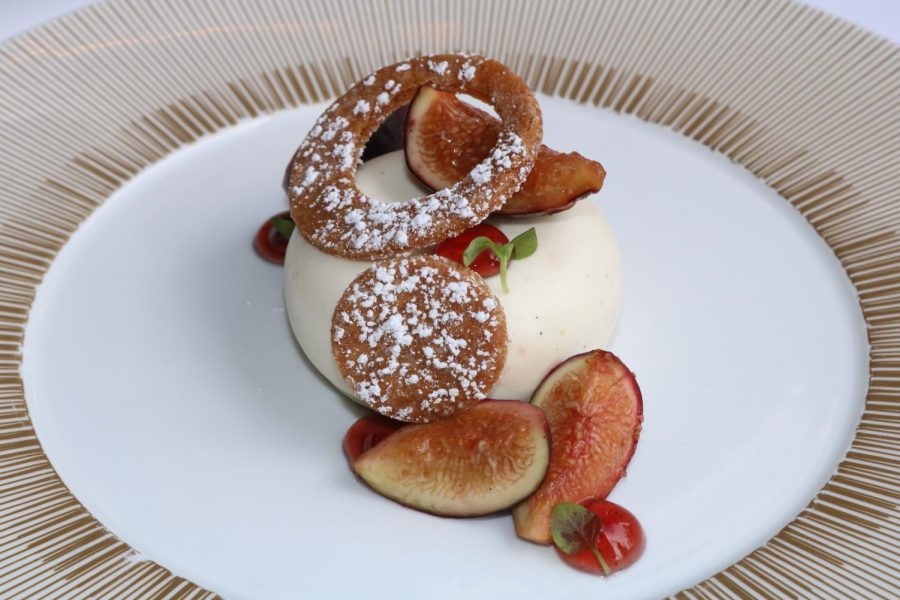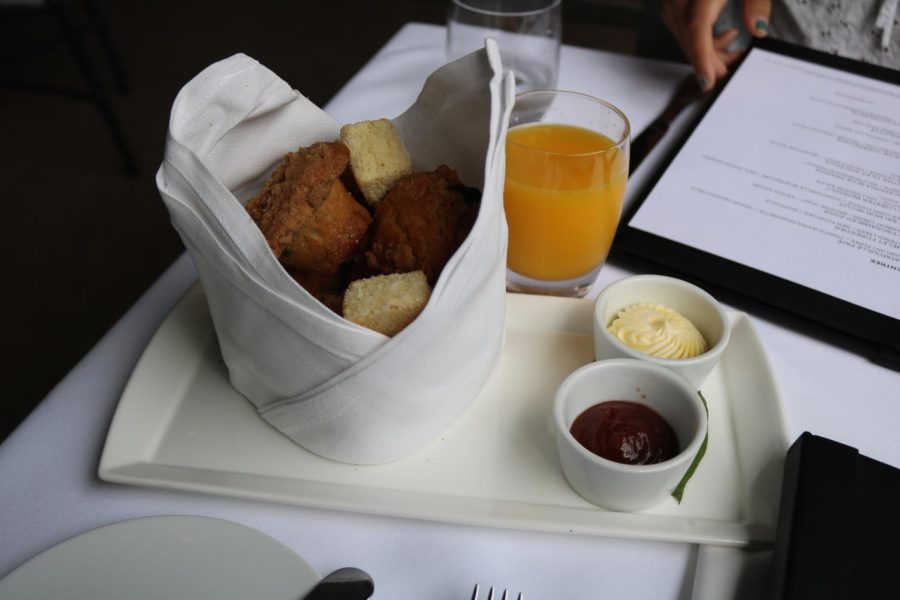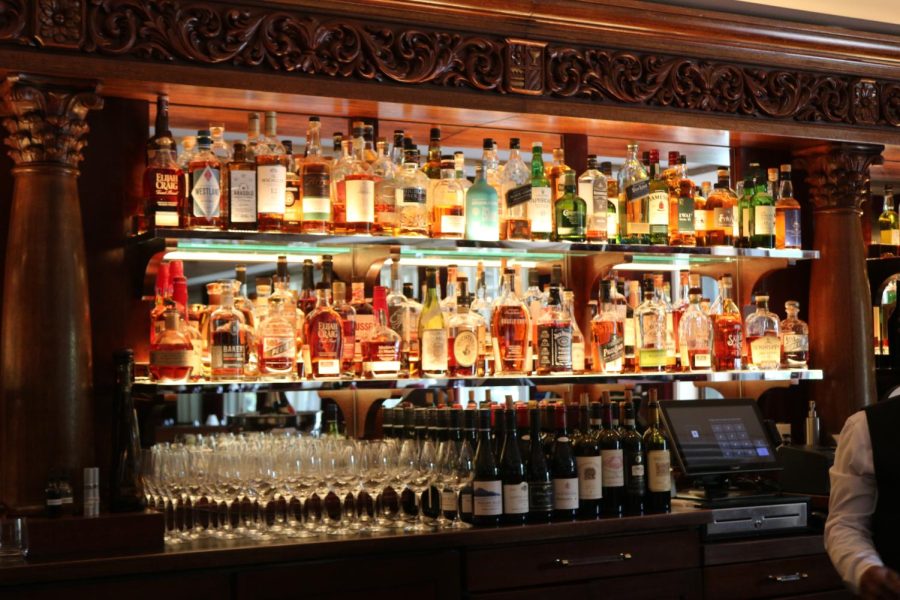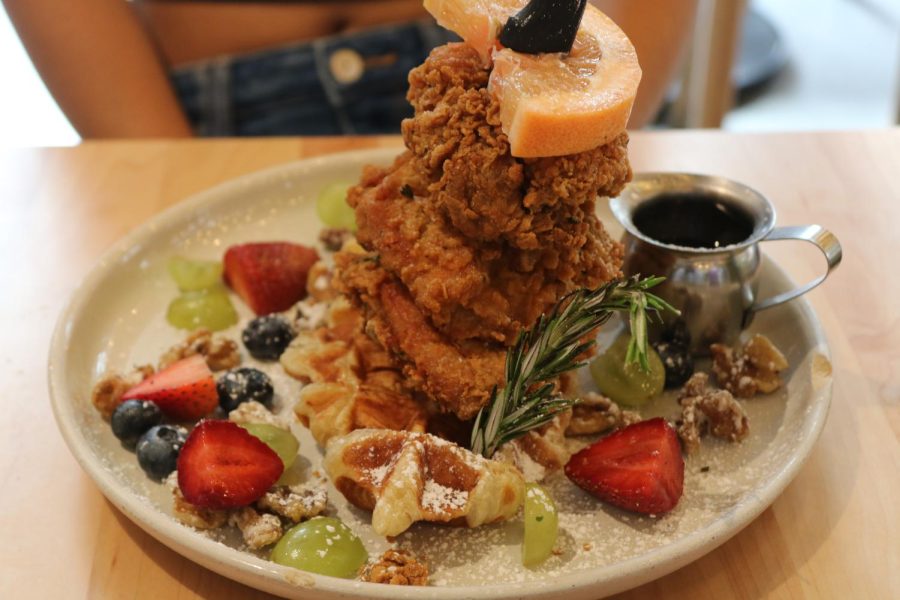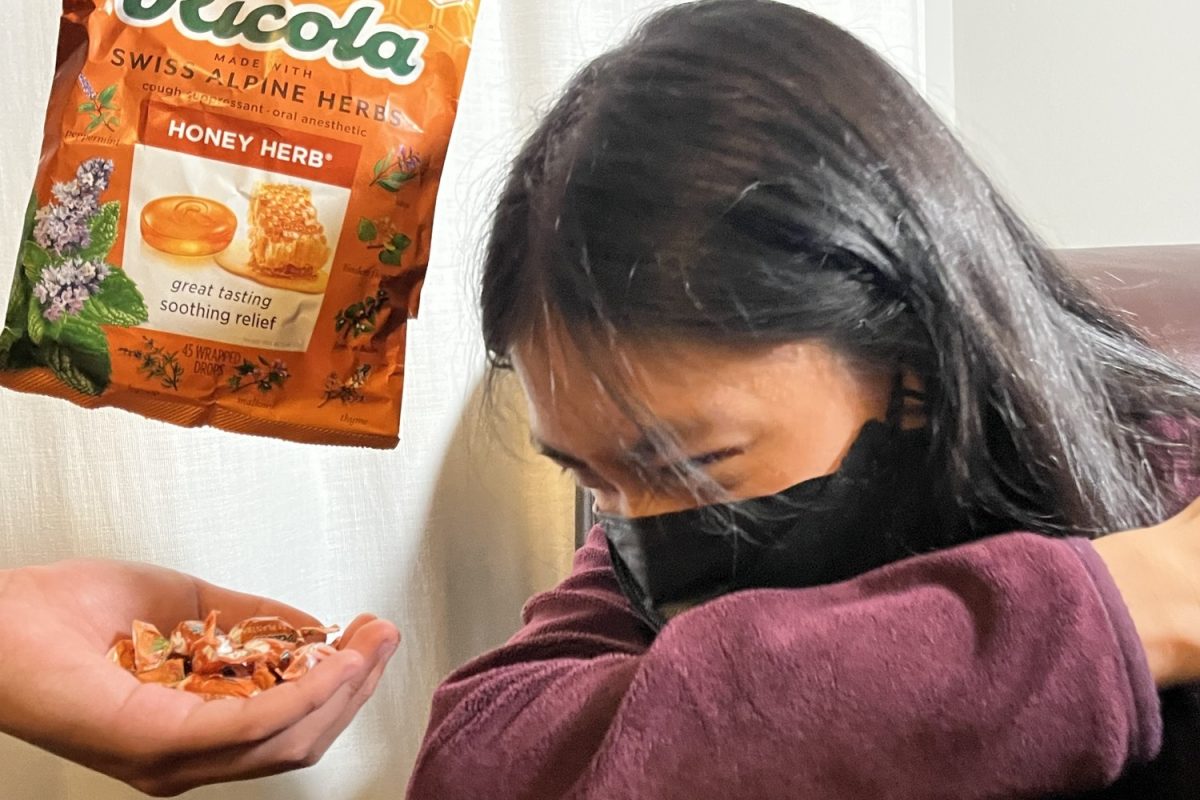They are simultaneously found on the Hollywood Walk of Fame, within a certain culinary guidebook, and millions of miles away from Earth. These captivating objects have ensnared humanity’s focus for thousands of years. However, a certain kind of star has fueled a never-ending craving since 1926.
Michelin stars.
They are considered to be one of the most sought-after culinary awards a restaurant can achieve. Established in 1926 by the French tire company Michelin, the stars quickly became a symbol of culinary excellence worldwide.
Michelin stars are found in the Michelin guidebook, a comprehensive overview of worthy places to eat, sleep, and more on road trips. At first, the Michelin guide simply contained restaurants that were deemed adequate by Michelin; however, anonymous restaurant inspectors were soon recruited in order to better deem what places deserved Michelin’s attention. In 1926, the practice of awarding a single star to fine dining restaurants became a distinguishing feature of the Michelin guide. Five years later, the concept of restaurants being awarded zero, one, two, and three stars was introduced. Subsequently, in 1931, criteria were established for inspectors to use when awarding each star.
Although it may be surprising that a French tire company’s foyer into the culinary world has so much bite, the Michelin guidebook’s influence cannot be denied. With over 30 million guides in circulation, which classify establishments in 24 countries, the Michelin guide books reach is vast. Michelin-starred restaurants also tend to pop up around major cities and food meccas, such as the Bay Area, instead of having a uniform distribution across the countries they reside in.
The guidebook’s influence is the main factor as to why restaurant inspectors have to remain anonymous. This aspect of Michelin stars forces restaurants to remain vigilant and consistent with food quality and service.
“Everything you do is under the microscope,” said Will De La Rosa, a waiter at The Village Pub, a Michelin star restaurant.
De la Rosa has worked in the fine dining industry for 10 years but recently made the jump to the Michelin world.
The Village Pub is located in Woodside, Calif., and has retained one Michelin star since 2009, which is no easy feat.
“It’s hard to get one (star), but it’s harder to keep it,” said Edalyn Garcia, head chef at The Village Pub.
The New American restaurant sources 80% of its ingredients from SMIP Ranch, a privately owned farm in the Woodside hills that grows its crops without synthetic fertilizers or other chemicals. Although The Village Pub supports local farmers, a lot of their higher-tier ingredients are imported, such as Italian tomatoes and French truffles.
The Village Pub, along with most Michelin and fine dining establishments, features a seasonal menu. A rotational menu enables the restaurant to evolve and change with current trends and new competition.
“We try to keep everything seasonal and constantly evolving,” Garcia said.
Garcia has years of culinary experience from culinary schools and various cooking competitions. She dedicates hours in the kitchen to develop dishes, all changing with the seasons. For example, if one were to look on The Village Pub’s website, the dishes displayed would not reflect the current menu.
“We like to reinvent and improve past dishes, to avoid stagnation in our menu,” Garcia said.
For $75 a person, The Village Pub serves a 3-course brunch consisting of a pastry basket, an appetizer, a main course, and a dessert. The pastry basket comes for the whole table and includes freshly baked mini muffins and biscuits.
The appetizer course, as well as all the others, had an element of selection to it. With seven options for both the appetizer and main course, the diner is given the freedom to choose dishes while retaining the tasting menu experience. Pre-selected menus by the head chef elevate any restaurant experience, as they force the diner to conform to the head chef’s whims. However, with food allergies and different preferences from person to person, having selections within the tasting menu allows for a delectable experience and caters to the diner more.
To experience the tasting menu phenomena firsthand, we decided to go to The Village Pub ourselves and order the brunch course for $75 a person.
Appetizers:
The appetizers we elected to try were the Early Girl Tomato and Watermelon Gazpacho and the Peach and Padrón Pepper Salad. Tomatoes, watermelons, and peaches are all summer ingredients that correspond with the time of year we visited.
The first dish to come out was the watermelon gazpacho. Gazpacho is a Spanish cold soup typically made with tomatoes and eaten during the summers. The dish was by far the lightest of all that we ordered, which is why it was served first. Our waiter, who has tried every dish on the menu, chose the order of the dishes. Each dish increased in richness as the meal went on.
The gazpacho came out in a deconstructed format, with watermelon cubes and the other dry components being on the plate, separate from the broth. Our waiters poured the broth onto our plates at the table, and when we had our first tastes, the flavors blended together with every component contributing to the vibrant summer flavor. At first glance, we thought that the various color components were just for decoration, but each imparted its own unique flavor that layered perfectly with the cold broth.
[embedyt] https://www.youtube.com/watch?v=-PGpW10Yr6I[/embedyt]
The Peach and Pandrón Salad came out after De la Rosa’s selection. It consisted of fresh peaches, crescenza, prosciutto, spiced pecans, and a honey vinaigrette. Since the density of this dish outweighed the gazpacho, it was served second, and this selection allowed us the most enjoyment of the dish. Like the gazpacho, all the components made the dish whole. The crunch of the pecans and peaches, along with the smooth crescenza and honey vinaigrette, created a perfect harmony and balanced palette.
Entrees:
The first entree we had was the King Salmon Mi-Cuit. It consisted of a salmon steak poached in an olive oil-herb mixture over a bed of corn with a fresh chanterelle mushroom reduction overtop it. Chanterelle mushrooms are notoriously expensive to source due to their specific growing conditions. However, their umami, savory flavor combined with the creamy sauce aided in the salmon’s appeal. The salmon itself had a texture unlike any other we had tried before due to the cooking method. It was tender and melted in our mouths with one taste. The corn contributed an element of sweetness which contrasted well with the savory elements of the dish. However, this dish was the main factor in how full we felt due to its depth of flavor and density.
[embedyt] https://www.youtube.com/watch?v=C7_abhhn3RU[/embedyt]
Since the New Caledonia blue prawns were served with creamy grits, De la Rosa believed that this should be served second after King Salmon. The creamy grits and wild mushroom ragout provided two different textures to the prawns. Although the texture of grits may not be everyone’s preference, the contrast was a notable change for the palette before introducing the desserts. However, this plate had one of the less appealing plating designs out of all the dishes we had ordered. Nevertheless, the freshness and flavors of this dish were excellent.
Dessert:
Although cheesecake may seem like a dense dessert dish, it was much lighter and fluffier than the bourbon-peach entremets so it was presented to us first. This dish was composed of a vanilla bean crème fraîche, port wine-poached figs, and graham crackers shaped into geometric shapes. This dish was plated the best, and all the elements contributed not only to the taste but also to the presentation. The crème fraîche’s lightness, paired with the crunch of the graham cracker, presented a contrast in the mouth. We devoured this dish and thoroughly enjoyed all its components.
The Bourbon-peach entremets consisted of a cake-like entity encased in a chocolate shell, a scoop of peach-vanilla ice cream, and dollops of a peach reduction sauce. The sauce was infused with bourbon and peach elements and had a light pink color, but the bourbon flavor overwhelmed the sauce, which was unpleasant. The cake’s texture was also too dense for our liking, but the peach-vanilla sorbet was light and enjoyable.
However, The Village Pub’s Michelin star is not only due to the quality of food.
“Our food isn’t the only thing being judged when Michelin stars are in consideration,” De La Rosa said.
With one step into the restaurant, the amount of thought put into every aspect of the establishment is apparent. Each table is meticulously organized with perfectly placed silverware, wine glasses, and plates. From the chair placement to the lighting, The Village Pub presents customers with a perfectly controlled environment for dining. As for pricing, our meal came out to be $202.08.
However, the meal’s extravagance was not simply due to the food itself. When dining at a Michelin restaurant, one can expect every component of the restaurant to be fine-dining-esque.
Service is a crucial aspect that adds to the ambiance of a Michelin restaurant as well as how the food is served. Our waiter at The Village Pub, De la Rosa, was no disappointment. As mentioned, he used his knowledge of the dishes to plan a specific order for our meal.
“Waiters are assigned as shadows to senior waiters upon their arrival and don’t make tips during this time period due to a strict focus on learning (the correct way to serve customers),” De la Rosa said.
The diligent guidelines that waiters must adhere to allow The Village Pub to retain its Michelin star and top-tier status.
“When serving customers, we have to adhere to an ‘open placement’ of the dishes in order to provide the best experience for the customer,” De la Rosa said.
After we found out about the meticulous and standardized training waiters had to undergo, it became apparent that every server was incredibly qualified in all aspects of what they did. Each minute action that a waiter performs is analyzed, meaning that one wrong move could result in punishment from a manager.
“For example, if we say something like ‘Hey guys, this is your food,’ we would get reprimanded due to lack of formal language,” De la Rosa said.
The formality of The Village Pub, as well as most Michelin restaurants, has to transcend the diction of the employees. Inspectors also place heavy stock on a restaurant’s ambiance and overall vibe.
“The music can be a really big thing to the overall feel of the restaurant, as well as how we fold our tablecloths and how we set our wine list,” Garcia said.
When faced with this information, one can be taken aback by the amount of thought being put into seemingly small aspects of a restaurant.
[embedyt] https://www.youtube.com/watch?v=RzQy4SpfsJM[/embedyt]
However, each aspect comes together to form the ‘Michelin’ experience. The Michelin distinction soon becomes apparent when one travels to a non-Michelin-starred establishment.
One example of this was our later voyage to Sweet Maple, an Asian-influenced New American brunch restaurant in Palo Alto, Calif. Sweet Maple is known for its Instagram-worthy dishes and casual dining environment. Their brunch menu encompasses a large variety of dishes, from different flavored mochi waffles to a loco moco dish.
Dining at Sweet Maple was a pleasant but unpolished experience compared to our time at The Village Pub. Trendy pop songs could be heard from the speakers in a brightly lit, modern environment. This may not be a prime brunch spot for those seeking a calm and controlled space.
[embedyt] https://www.youtube.com/watch?v=pAxDMRm2jIA[/embedyt]
While at Sweet Maple, we ordered the Matcha Moffles and the Chicken Croffle. Although these two dishes are not a direct comparison to the dishes at The Village Pub, these are two of their most popular and ‘kitchen special’ dishes. Upon first glance, we were incredibly impressed with the plating and design.
“We use a variety of ingredients and value presentation and appearance (in our food),” said Lin Ban Han, head chef at Sweet Maple.
However, compared to the delectable plates that we enjoyed at The Village Pub, we found that many of the ingredients on the plates were just there for decoration and did not necessarily add much to the flavor. For example, the Matcha Moffles were dusted with powdered sugar and matcha powder. This did not serve many purposes except for providing a decoration element. Similarly, the Chicken Croffle had a herb sprig, fruits, and walnuts sprinkled around the plate without creating cohesion with the main elements: the fried chicken and croffle.
While the increments between each plate at The Village Pub were precisely timed out, Sweet Maple, along with most other non-fine dining restaurants, elect to serve the entire order at once. Although this is more efficient for the kitchen, it denotes the overall dining experience due to the clashing flavors and temperatures of dishes.
Another unregulated aspect of the ‘normal’ brunch restaurant is the clashing uniforms and body language of the servers. Although these aspects seem insignificant, when faced with an establishment that can blend non-culinary factors to aid one’s culinary experience, it becomes apparent that the latter is a force to be reckoned with.
Although a Michelin star is a primarily culinary award, aspects of its significance transcend just the taste of a restaurant’s food. Every facet of a restaurant is analyzed carefully and particularly by the inspector, and this level of scrutiny is possible to occur at any time the restaurant is open for business.
Within the Michelin guidebook, one star is considered a “very good restaurant in its category,” two stars are classified as “excellent cooking, worth a detour,” and restaurants with three stars are stated to be “exceptional cuisine, worth a detour.” Given these ratings and the mystique surrounding Michelin, it makes sense that the company has established a cult following of foodies around the globe.
“A lot of three-star Michelin restaurants are destination spots. People will make it their life’s mission to visit them,” Garcia said.


